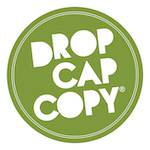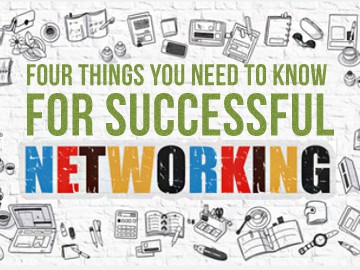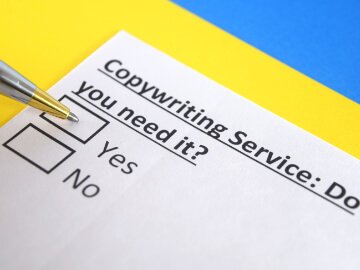Writing an About page can be the hardest – some might say the worst – part of writing your website. While any freelance copywriter will summon the copy gods to nail an About Us page for their clients, writing your own can leave you feeling frustrated – or just too far out of your comfort zone to get it done at all. But don’t let it put you off. Your About page is a key selling tool and it’s all about knowing what to include – and what you shouldn’t. So this article is about how to write an About page you actually like – and one that works.
What is an About Page?
Your About page should explain, in simple terms, who you are and what you do. Its aim is to help differentiate yourself from your competitors. So even if there’s a flood of freelancers doing the same job as you, there’s no one else like you – how you act, speak, or work. So it’s an ideal place to get this bit of your personality across. But the key thing to remember is that an About page is also a sales page – an opportunity for you to get down to the nitty-gritty.
Why is it so hard to write your own About page?
I think, deep down, most (though not all) people don’t really like talking about themselves that much. There’s definitely a feeling that we might come across as boring, bland, or stuffy or just brash, overconfident, and showy. And then there’s the problem of how to write it – what should you say? What shouldn’t you say?
Sometimes the only thing to do is put it off, get on with some client work, and figure out what the hell to write about. But that means it will be filled with generic placeholder info which won’t say much about you or your business. That can also be a problem as the task will then probably slide effortlessly down your priority list forever.
But let’s face it, most people aren’t really that interested in anything ‘about’ us. Well, maybe they are a bit, but what they really want to know is what you can do to help them.
What information should you include for your About page?
For any About page, a lot comes down to personal preference and how comfortable you are talking about yourself. But there are a few things that are crucial to include. Here’s a general checklist that covers the basics of what you need:
> Give yourself a catchy headline
> Write a snappy intro about you and what you do
> Explain how you can help people
> Give a brief business backstory/what led you here?
> Provide internal links to your work/portfolio pages and your contact page
> Include a call to action
> Add a pro headshot (if you want!)
What mistakes can you avoid making when writing your About page?
Just remember this is essentially a sales page, albeit one about selling yourself, who you are, and what you do. And it’s an important page to get right. Hubspot reckon it’s one of the four most important pages on your whole website, so no pressure!
But because it’s supposed to be a bit different – talking about yourself and lowering your guard a bit – it’s easy to forget the basic things that other pages already have. So make sure you add relevant page links (to service pages, contact pages, FAQs etc).
Though your About page might not be a super-high-ranking page for you, it will still rank. People will still see it and read it, so don’t drone on and on, going into every last detail of your life or career journey. Keep it fairly short and punchy.
And don’t go in all guns blazing with bold claims. If you’ve done something or can do something that will help customers, give them specifics on how. This is a great way to add links to any case studies or portfolio pieces you’ve already got on your site.
Techniques you can use to tease the right words out of yourself
As I’ve already said, writing an About page for yourself can be hard, so don’t rush into it – give it some real thought before you get started.
One technique is to think of how what you’d say if someone came up to you and asked you who you are and what you do. Without thinking, you’d try and explain in very simple terms, keeping it short and sweet. And that’s just how you should approach writing your About page. Keeping things natural and conversational is a great way to sound empathetic to your site visitors. And, when we say things in passing, sometimes that’s the bit of inspiration you’re looking for.
But just like any other web page, your About page should always be a work in progress. So once you’ve written it, don’t let it stagnate, get old, and out of date. Don’t be afraid to go back to it every once in a while to refresh it, update it, or change something.
How can you make your About page stand out?
The goal is not to let your About page sound boring or the same as everyone else’s. Achieving that might actually get someone to do the impossible and read to the end.
Approach writing your About page as you might write any other web page. People’s attention spans are short, even if they’re already hovering over your ‘contact me’ button. Keeping things short will help, so use:
> Bullet points
> Client’s logos for social proof
> Your business values
It’s also a page where you can include little facts and stats about yourself that might get people asking questions or sharing a connection over something. So rather than saying, ‘I like baking’, tell people that you applied to be on Bake Off six times, so with all the practice, you should consider opening a bakery and that you just bloody love cake!
Just be as interesting as possible about yourself. Give a sneaky peek at who you really are – a bit of personality-based realness behind the professional expert.
And remember…
The most important thing to remember is that every About page will be different. No two people are the same, and neither are their About pages. So while all these hints and tips might focus on best practices for how to write an About page, don’t feel restricted by what you think ought or ought not to be included. Just be yourself – everyone else is taken!
If you want some inspiration, check out my About page. But leave a comment below to tell me what you’re doing for your own About page.
Need some expert help with your website copywriting? Contact me today to kickstart your project.





